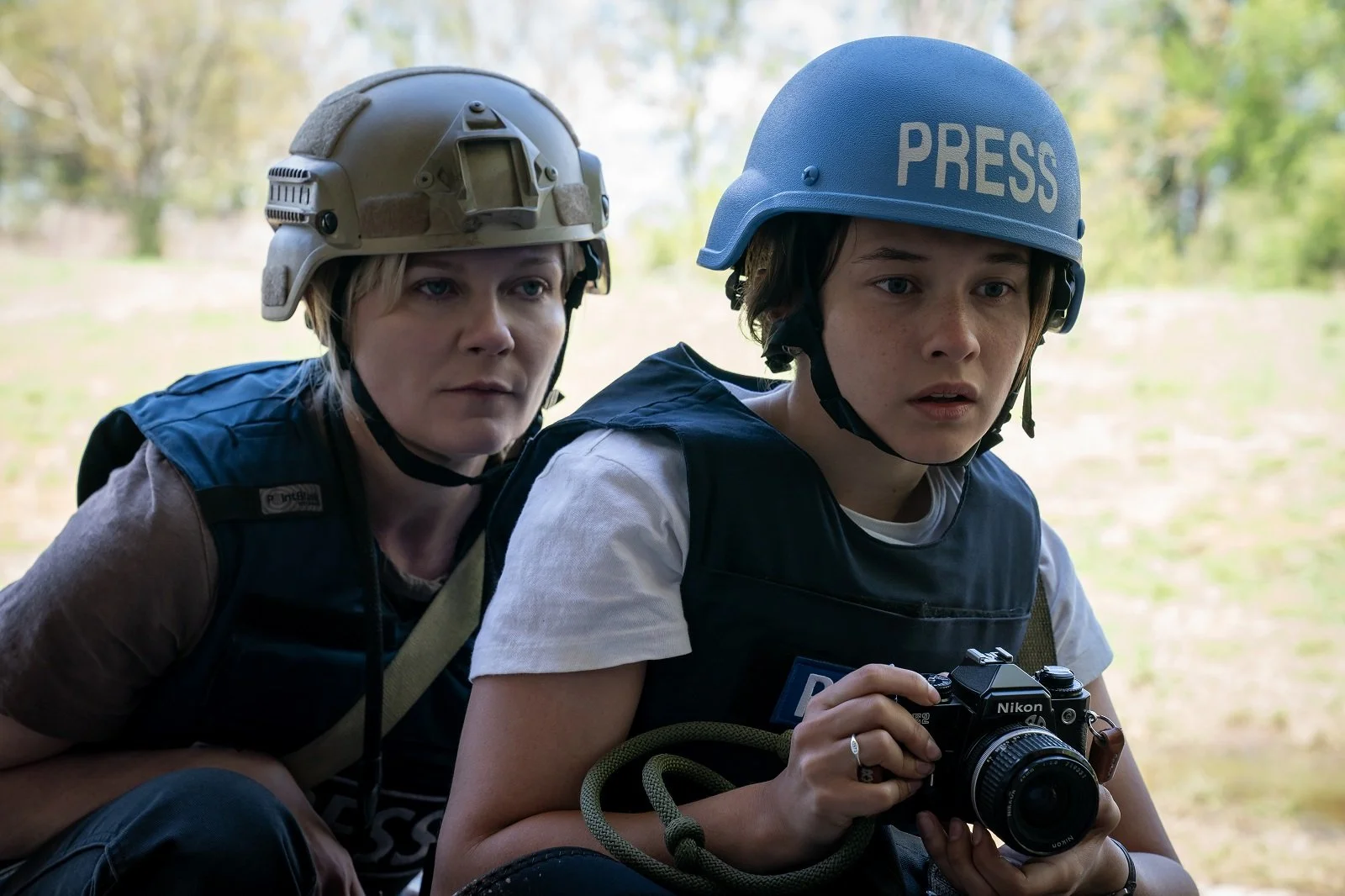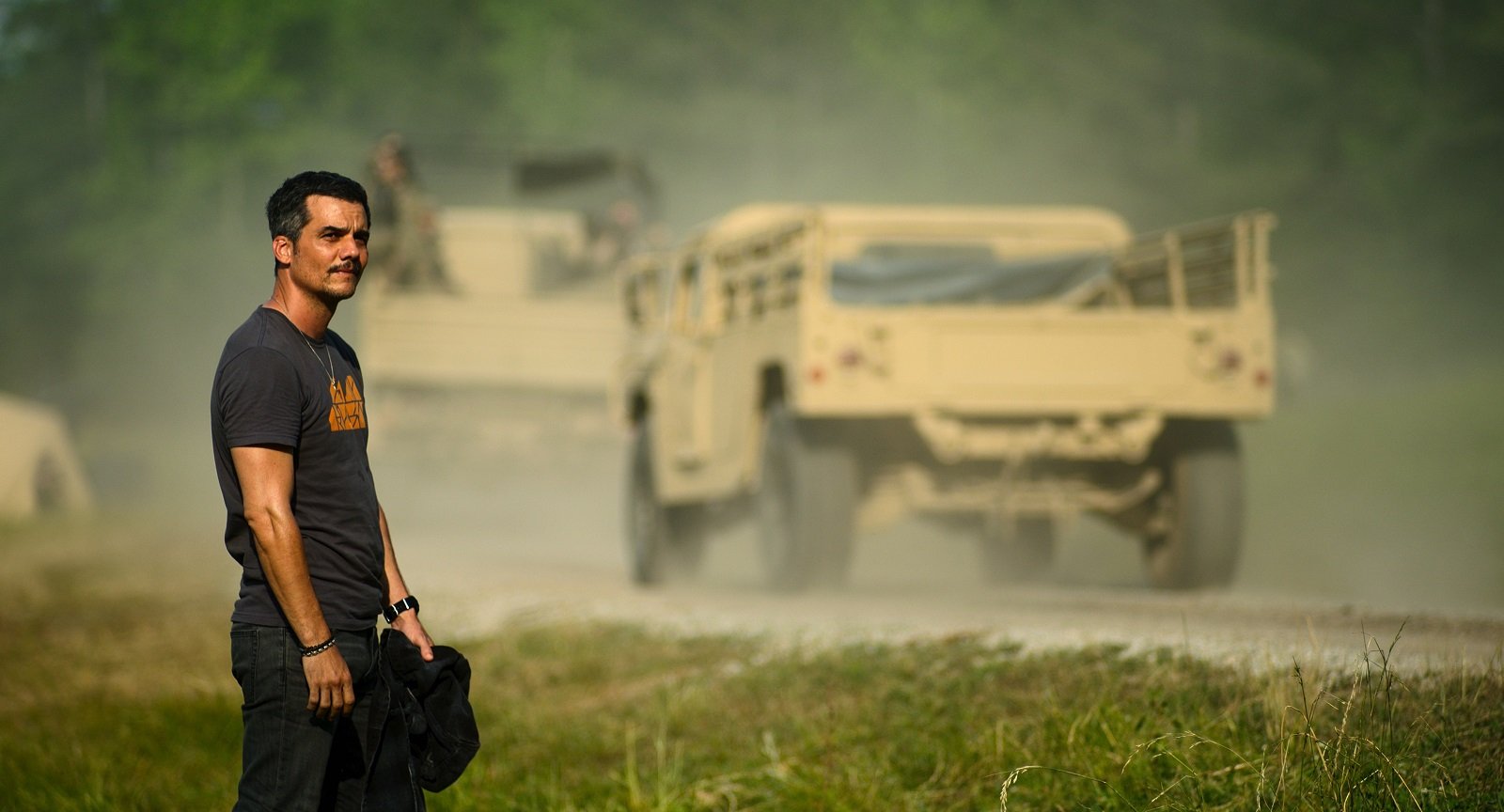IR Film Review: CIVIL WAR [A24]
The contradiction of perspective sometimes offers a different perception in certain ways. With the film "Civil War", writer/director Alex Garland again seeks to stir the pot philosphically while using real world perspectives to engage ideas of conpiracy, hurt and misdirection. This is really the story of two women: one hardened in her work but still feeling its intent and a newby not quite sure of her response but growing into it. Kirsten Dunst plays photojournalist Lee Smith who has seen everything under the sun but never quite on her own soil. She and her partner-in-crime Joel (Wagner Moura of "Narcos" fame) are adrenaline junkies in a way but still have a sense of what they are doing. This is a journeyman trip, a very specific story from point A to point B. In that way, "Civil War" lets the audience piece together in many ways within their mind what is happening. Garland gives bits and pieces of what is happening but is smart to keep away too much exposition. There are big set pieces but they do feel intimate because of what is going on.
Cailee Spaeny who is next seen in "Alien: Romulus" and was formerly in Garland's FX series "Devs" plays Jessie, a young photojournalist who attaches onto Smith in a way after a terrorist event in NYC. That bit sets up a sense of what will be seen. But then the idea is to capture the Western forces (Texas and California) as they march to take the White House from The President (Nick Offerman]. Again it is completely from their perspective of the road trip there. The motivations and reasoning of the people they encounter are not questioned. They just are. The reasoning of how they got to this point is sort of beyond the idea of what the film is. It is just how these small group of people see it and how they are intersected with it in certain ways. Many scenes leave an imprint.
The first being the group (which also includes Stephen McKinley Henderson [also seen in "Dune - Part I"] as Sammy, an older journalist who doesn't want to miss the story) camping in a way outside part of the war front. You can see tracer fire and light from explosions but not what it actually is. It really leaves that on the viewer. It comes to bear in (again a smaller visioned way) the next day. Garland uses the war photographer camera and images in a way that really solidify what we are seeing. People want their pictures taken, even if it is something where society has broken down. This happens too at a gas station, which is another key scene where perspectives of the character move back and forth. Another happens at a quick stop at a mall where Smith tries to teach Jessie how to see and not flicnh. A changing point happens with one of the scenes shown in the traller which is brief but exceptionally important (with Jesse Plemons).
The set up and delivery is so simple and yet so haunting that it truly defines the rest of the film and its stakes, especially in the aftermath and what is sacrificed. The third act is of course the money shot and needs to deliver. What is interesting is see how the dichotomy shifts. A very specific direction and intent with Garland in regards to Dunst's character and then the eventual coda with the remaining team truly reverberates. To give away any more of "Civil War" would ruin its power. It is not complicated story but the ideals involved are. The characters have their own movements but Garland is smart to not spell out what we are seeing beyond letting us see it. It is not a biography on a current situation, simply a perspective of fiction using different angle poins to create a what-if scenario. A
By Tim Wassberg




